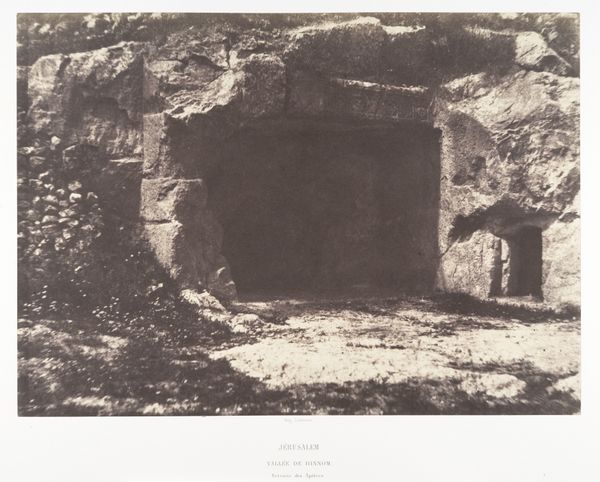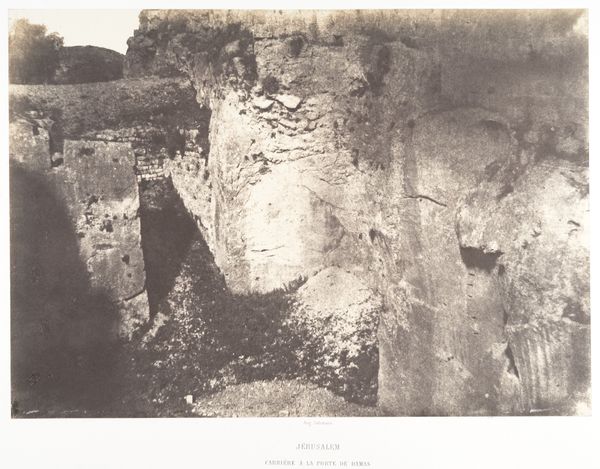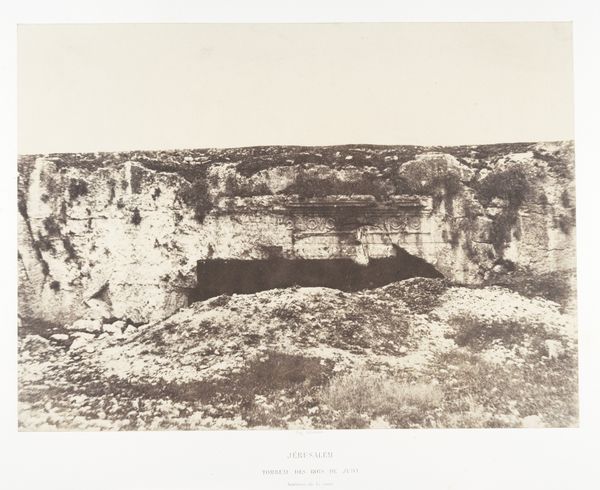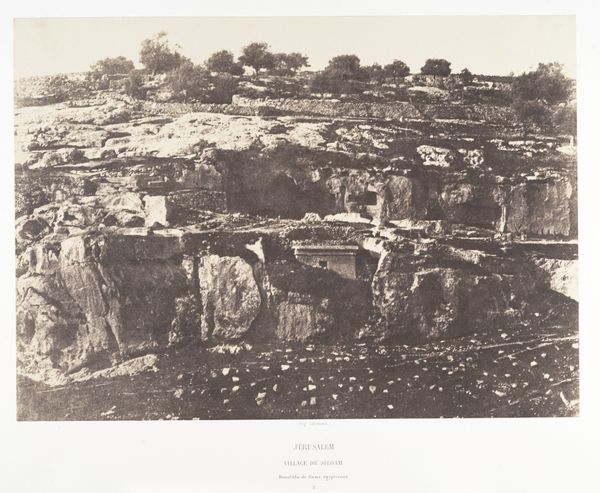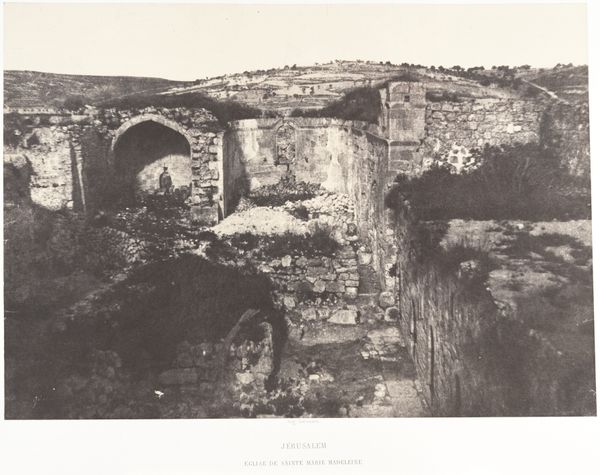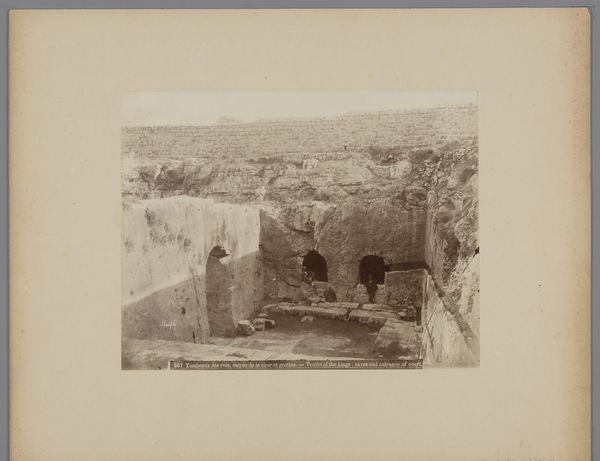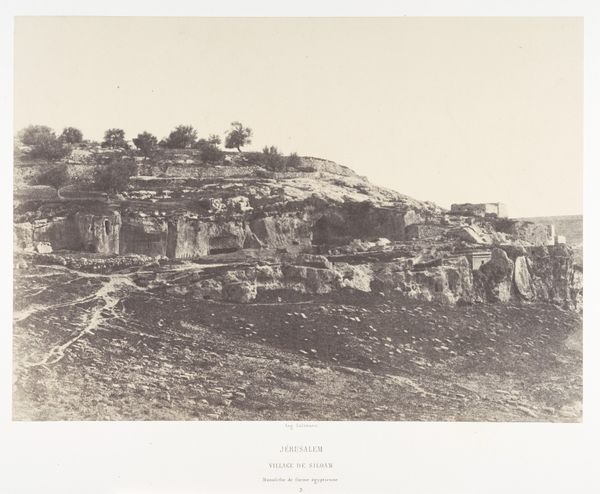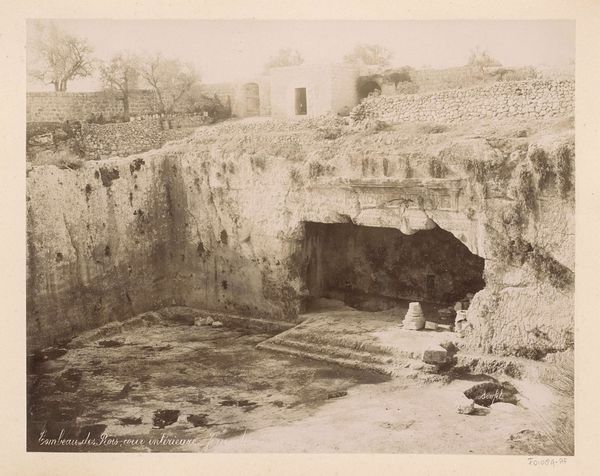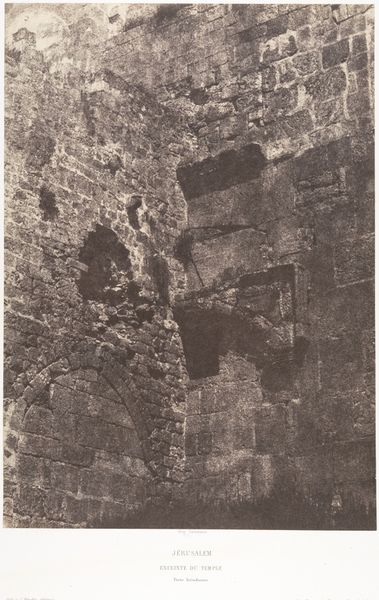
Jérusalem, Vallée de Josaphat, Grotte sépulcrale, 1 1854 - 1859
0:00
0:00
daguerreotype, photography
#
landscape
#
daguerreotype
#
photography
#
orientalism
Dimensions: Image: 23.2 x 33.5 cm (9 1/8 x 13 3/16 in.) Mount: 44.8 x 59.8 cm (17 5/8 x 23 9/16 in.)
Copyright: Public Domain
Auguste Salzmann made this photograph of a sepulchral cave in Jerusalem using a paper negative sometime in the 1850s. Salzmann’s photography took place in the context of French and British colonial expansion into the Middle East. Like archeological surveys or diplomatic missions, photography was seen as a tool with which to catalogue, classify, and ultimately control foreign lands. This image is part of a series commissioned by the French Ministry of Foreign Affairs intended to demonstrate the veracity of biblical accounts through photographic evidence, emphasizing the idea of a shared Judeo-Christian heritage. This sepulchral cave reminds us that even the seemingly objective medium of photography is always shaped by particular cultural and institutional agendas. Understanding these agendas requires historians to investigate archives, government records, and other documents that shed light on the social conditions that made possible the artwork’s production.
Comments
No comments
Be the first to comment and join the conversation on the ultimate creative platform.
